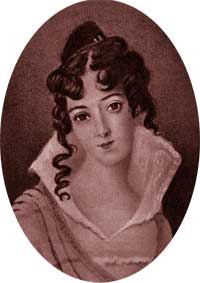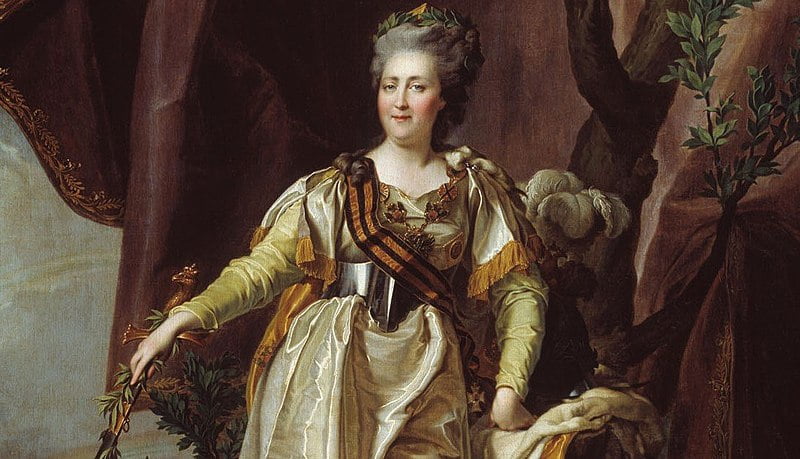There is a widespread belief that the empress was the first in the country to decide to get vaccinated against smallpox in order to inspire people with her example. We decided to check if this is true.
Information that Catherine II was the first to try variolation from smallpox on herself can be found in various media: they write about it Deutsche Welle, "Arguments and Facts", "Rossiyskaya Gazeta". Former Minister of Culture Vladimir spoke about this Medinsky and former chief sanitary doctor Gennady Onishchenko. There is also a mention of the fact that the Empress was the first person in the Russian Empire to be vaccinated on the official resource to combat coronavirus, website State Museum "Tsarskoe Selo" and on the page Rospotrebnadzor.
Medical historians still do not agree on the time of the appearance of smallpox. Descriptions of a similar disease are found in Bible, and in Koran. Scientists suggestthat the smallpox virus may have separated from its progenitor between 68,000 and 16,000 years ago. Unlike the plague, which occurred in isolated outbreaks, smallpox was constantly present in the population. At the end of the 16th century, the English physician Kilvay in his treatise on smallpox noted, that there is no need to “go into a detailed description of this disease, since it is well known to almost everyone.” A disease brought from Europe became cause of death of more than one hundred thousand Aztecs and Indians. Mortality in some epidemics reached up to 90%.
One of the first written mentions of smallpox on the territory of the Russian state dates back to 1427 - in the Nikon Chronicle described, that “the pestilence was great in all Russian cities across all lands, and they died like pimples...”. During the reign of Fyodor Alekseevich in 1680, it was published decree, which forbade those who had “fire or fever and smallpox or other serious illnesses” from appearing at court. Presumably, precisely because violations In 1730, this decree was issued by Prince Sergei Petrovich Dolgoruky, whose children were sick at home, and the grandson of Peter I, Peter II, died.

Catherine II is very was afraid smallpox, especially considering that her husband Peter III suffered from smallpox as a teenager and had characteristic smallpox marks on his face. “I was scared: all the ladies invited with us to dinner at General Apraksin’s were constantly scurrying back and forth from this sick child’s room to the chambers where we were. But this time I escaped only with fear” - describes Catherine II visited General Apraksin, whose daughter was suffering from smallpox at that moment. On May 28, 1768, Countess Anna Petrovna Sheremeteva, maid of honor of Catherine II, died of smallpox just a few days before her wedding. Then the empress made her final decision. She invited the famous smallpox vaccination doctor Thomas Dimmesdale from London. Realizing that after variolation adults have a fairly high risk of getting seriously ill, the doctor first suggests that she experiment and vaccinate several people of her age and build. However, the empress was already determined then, and on October 12, 1768, Dimmesdale inoculated her with smallpox, taken from the hand of a six-year-old boy, Sasha Markov. It is worth noting that the empress was by no means confident of a favorable outcome. This is evidenced by her order keep a team of horses constantly ready so that Dimmesdale could leave the country and avoid lynching.

However, to claim that Catherine II was the first in the Russian Empire to dare to undertake such a procedure would be completely wrong. Protection against smallpox by the method of variolation was practiced in certain provinces much earlier: in Little Russia, Kazan province, Turkestan region. For example, the Circassians always vaccinated children as soon as they reached six months of age. However, this practice did not spread among the nobility. A little over ten years (in 1756) before the historical vaccination, variolation began practice Tartu doctor August Wilhelm Schulenius in the Livonia province. A local landowner, captain Karl von Liphart, handed over two peasant children to the doctor in order to try out variolation, which was gaining popularity in Europe. Details about this left Friedrich Conrad Gadebusch in his treatise "The Livonian Library in Alphabetical Order" in 1777. After a successful experiment, Schulenius also vaccinated the children of Liphart (son Reinhold and seven daughters, including Euphrosyne-Ulrika - grandma Natalia Goncharova, wife of Alexander Pushkin) and younger children pastor Eisen, whose older children died of smallpox earlier. It is known that in the Livonia province Shulenius spent 1023 variolations, losing only one patient, whose relatives hid the fact that he was already ill at the time of vaccination. He also variolated two sons and daughters Fabian Adam von Stackelberg, married to Orlova, maid of honor and close friend of Catherine II.

Pastor Eisen also learned how to perform variolation and opened smallpox vaccination courses at the local church school, where he trained 45 rural mothers, who then had to practice it in their villages for children from the age of one month. Eat intelligencethat the Tallinn physician Peter Friedrich Kerber practiced variolation before 1760, and from 1763 Friedrich (Fedor) Ludwig Rühl also began to carry it out on an ongoing basis. So more than one thousand children were vaccinated much earlier than the empress.

Moreover, variolation was also carried out in the capital. Started it practice in 1764 Andrei Gavrilovich Baherakht, letting down intermediate results of his activities in the 1769 brochure “Description and instructions on smallpox vaccination.” He's in it reports, that “here, in Livonia and St. Petersburg, although such smallpox inoculation has been known for several years and has been carried out with the desired success by many, in Livonia through Mr. Shulenius, and in St. Petersburg in 1764 through me and Mr. Staff Doctor Kelchen, however, such small and especially carried out experiments were by no means strong enough to introduce it into general use. A strong example was needed, which was shown by the Great Catherine <…>.”
And in 1766, the scientific secretary of the Medical College Christian Pequin did report “A way for rural people to take advantage of themselves in smallpox.” A year later, on December 11, 1767, a member of the Medical College, Dr. Grigory Fedorovich Ash, at a meeting of the commission told about the success of smallpox vaccination in Estonia and Livonia, saying that “the surest way to protect the Russian population from smallpox epidemics should be artificial infection with this disease.”
Already in the last year of the Empress’s life, the British physician Edward Jenner May 14, 1796 spent the first experiment on inoculating a healthy person with the contents of a pustule from a patient with not human, but cowpox. This method of vaccination gradually completely replaced variolation.
Thus, Catherine II really set an important example for the population of the country, but calling her the first to be vaccinated against smallpox in the Russian Empire is incorrect, since she was not even among the first thousand to receive variolation. And if we were to try to determine the first woman from the noble class to receive variolation, then Euphrosyne-Ulrika Liphart (married Baroness Posse), grandmother of Natalia Goncharova, wife of Alexander Pushkin, could claim this title.

Not true
Read on the topic:
- The teeth of the ancient Vikings turned out to be reservoirs of the “killer virus”
- Bloody Harvest. How science defeated the most terrible disease in human history
- Fact check: 15 most popular legends about Catherine II
- Is it true that orphanages in the Russian Empire were created as a platform for an experiment on smallpox vaccination?
If you find a spelling or grammatical error, please let us know by highlighting the error text and clicking Ctrl+Enter.






